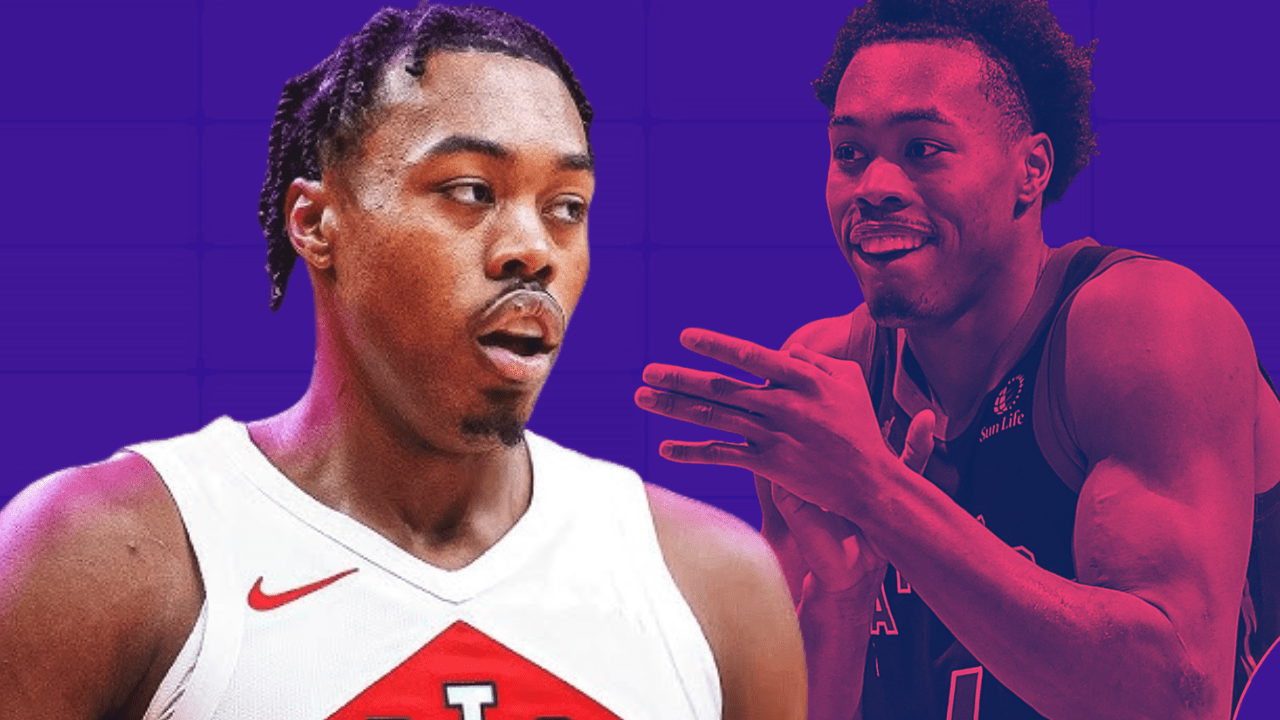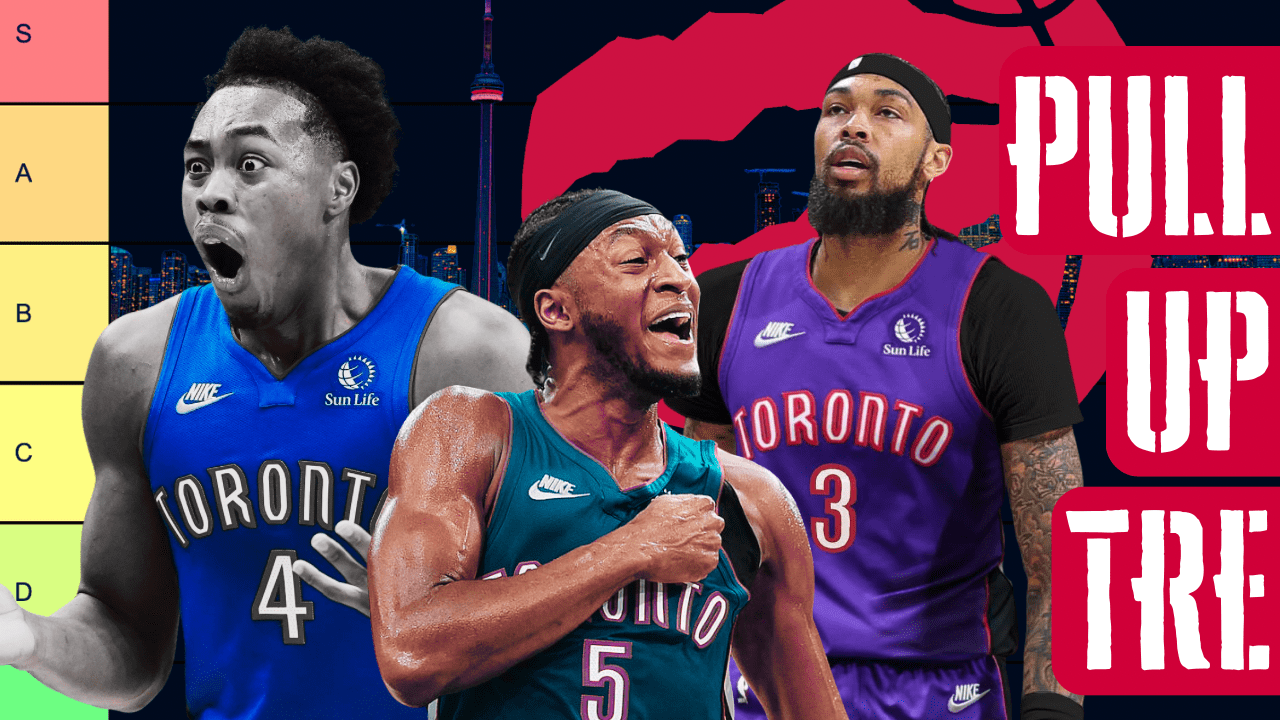The following is part of Raptors Republic’s series of pieces previewing the season for the Toronto Raptors. You can find all the pieces in the series here.
It is a special player who has abilities ready to translate to the NBA immediately upon entering the league. Most rookies are (relative) children in an adult’s league, with undeveloped skills, undeveloped understandings of the game, and years of learning ahead of them.
Not Collin Murray-Boyles.
Well, at least not in every way. In some ways, Murray-Boyles is just like other rookies. But his physical abilities will make him an exceptional athlete for the NBA, on Day 1, at age 20.
Murray-Boyles combines strength and speed like few players in the league. Plenty of youths and guards are as twitchy fast, and plenty of bigs and vets are as strong, but he has both. On Defence in college and Summer League, Murray Boyles could meet players in the lane, no matter their size, without moving. His court coverage was elite at that size. Offensively, he can take contact on his lower body and still turn shot attempts into layups. (Compare that to current or former Raptor bigs like Jonathan Mogbo or Chris Boucher, who fade away at the rim given even minimal contact on the ground, and it’s easy to see how strength can manifest.) His wingspan is 6.25 inches longer than his height, which is the third-longest margin among all rookies this year.
It’s not traditional athleticism. His vertical jump is nothing to write home about (among NBA players). His top speed is similarly unspecial. But he can jump into the lane from the top of the key before a ballhandler turns the corner, and he is strong enough to bump players off lines without budging an inch. That’s special.
Can athleticism get a rookie on the court?
To a point, certainly. And once he’s on there, Murray-Boyles’ limitations are more or less comparable to other rookies out there. His individual scoring will be far below average in the NBA, which is true for all rookies, but especially for most bigs. Though he has a strong face-up and driving game, his scoring will largely be in transition or created by teammates. His jumper may be solid in the future (and because I trust Samson Folk’s analysis implicitly, and he believes that Murray-Boyles’ jumper has potential, therefore so do I), but don’t expect it to be a real part of his game this season.
Given a team with different infrastructure, it’s easy to imagine Murray-Boyles playing 25 or 30 minutes a game. If he played on a team with a strong offensive system, spacing principles and strong self-creators, most coaches wouldn’t be able to keep him off the floor. Picture him on the Minnesota Timberwolves, or Golden State Warriors, or Miami Heat. Despite plenty of bigs and wings on those teams with entrenched spots, there are very few players who can do defensively what Murray-Boyles can do. Draymond Green and Bam Adebayo. Any others?
But on the Raptors, Murray-Boyles will be somewhat diminished on the court because the team itself is somewhat diminished on the court. There is little offensive punch from the shooting on the team, almost no pull-up shooting (although Brandon Ingram could change that), and very little driving ability. He should help as a driver and finisher. But Toronto’s limitations may just mean we won’t get to see that too much next season. Given that, Murray-Boyles’ offensive profile may well just see him as one player among others.
But he shouldn’t be just one player among others. He is defensively special. Let’s compare him to another young big on the Raptors who profiled as defensively special in Jonathan Mogbo.
Mogbo had similarly sky-high block and steal rates in college, as well as electric defensive rebounding rates for undersized bigs. (And both were among the best small handful of players in their final college seasons, and had similarly incredible assist and efficiency marks, but that’s not the point here.) But they accomplished those remarkably similar stats in very different ways.
Mogbo was and is a switch big. He can step out onto an iso wing or even a ballhandling guard and flip his hips with them, corral them, and force an awkward shot or a reset. He was remarkably effective at that even as a rookie big in the NBA. Though his block rate shrank in the NBA (normal for undersized bigs who block the ball well in college), and the team bled offensive rebounds when he played, his strengths did carry over into the league.
Murray-Boyles collected his steals and blocks more frequently within the team context rather than defence on an island. His best defensive position is off the ball, as opposed to Mogbo’s on the ball, particularly at the nail. Murray-Boyles is exceptional at shrinking the floor, attacking the dribble when it’s guarded by someone else, and generally sowing chaos in an offensive possession.
To me, that is more valuable than switchability. Ideally, players are good at both, and Mogbo is certainly no slouch off the ball, and Murray-Boyles a strong defender on the ball, but we’re talking peak strengths here. The most valuable defender in today’s NBA is a weapon no matter where on the floor, or in a system, he is to be found. And Murray-Boyles typifies that. Whether he’s guarding the screening big, the off-ball guard, the corner shooter, the dunker-spot lurking big, the cutter, the ball-handler, the anything: he will force turnovers and make offences make mistakes.
I expect him to step in as Toronto’s second-best defender immediately, on Day 1. That’s special. (And it’s only No. 2 because Scottie Barnes is already such a uniquely talented defender.) The most likely scenario for his rookie year is that he plays fewer minutes than he should, perhaps 18-22 minutes a game, and the team insulates him on the offensive end when he’s on the court. (That could happen by pairing him, for example, with Gradey Dick, which Samson discussed at length earlier in the summer.) As a result, and if that does happen, his on/off marks will likely be pristine. The team may well be at its best when Murray-Boyles is on the court. If that happens, it will only be because he plays less than you would like.
Predictions are fun, even if silly, so let’s offer a prediction for Murray-Boyles’ stat line next season. I expect it to be similar to Mogbo’s last year, although a little more bloated due to more minutes. Perhaps 10.0 points, 6.0 rebounds, 3.0 assists, 1.5 steals, and 0.7 (?) blocks per game. That feels modest enough, but when you plug it into Stathead, only one player last season equalled or surpassed those numbers, so we’ll see if I’m way off base. And all time only six rookies have ever done it. So, yeah, I’m definitely, certainly way off. Let’s keep it anyway.
Murray-Boyles is ready to blow your minds. But the team may not entirely be ready to unleash him at his full capacity. That’s fine and normal. As he grows and begins to offer more on the offensive end, and the team no longer needs to surround him with structure to enable his game, I also expect the Raptors to continue to add shooting and self-creation. In the future, there will be no limitation to his playing time. But that’s seasons down the road, imagining a different player and a different team.
But for now, get ready to enjoy Murray-Boyles for what he is. For his exceptional abilities, even as a rookie. Even if it actually manifests less frequently on the court than you might like.



